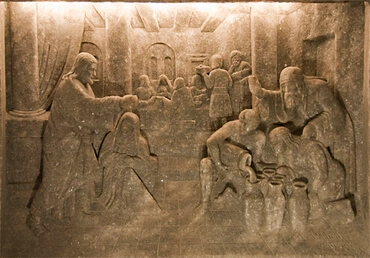6
Llant dinna sețța n tsebbalin ( icmuxen ) yețwaxedmen s wedɣaɣ, țțawint si tmanyin ar meyya uɛecrin n litrat, seg-sent i d-țɛemmiṛen wat Isṛail aman i luḍu.
6
Llant dinna sețța n tsebbalin ( icmuxen ) yețwaxedmen s wedɣaɣ, țțawint si tmanyin ar meyya uɛecrin n litrat, seg-sent i d-țɛemmiṛen wat Isṛail aman i luḍu.
By Brian David

The six waterpots here represent the whole collection of facts and ideas that contained the external truth of the Jewish church. The members of that church may not have understood the spiritual meaning of their own rituals, but they did have a body of knowledge and thought that supported those rituals and their continued belief. The use of this water for the "purification of the Jews" means that the external truth was used to remove evil from those who wished to be good.
The use of "two or three" seems unremarkable on the surface, but it's actually telling. "Two," in some cases, represents a profane state that comes before a holy one; "three" generally represents a state of completeness, of a goal being met or an intended act completed. These waterpots, then, could hold "two" meaning the state before the miracle, or "three" meaning the state after the miracle.
©2024 New Christian Bible Study Corporation. All rights reserved. Printed from newchristianbiblestudy.org
ResponsiveVoice usus est in Non-Commercial License 
©2024 New Christian Bible Study Corporation. All rights reserved. Terms of Use | Privacy policy.